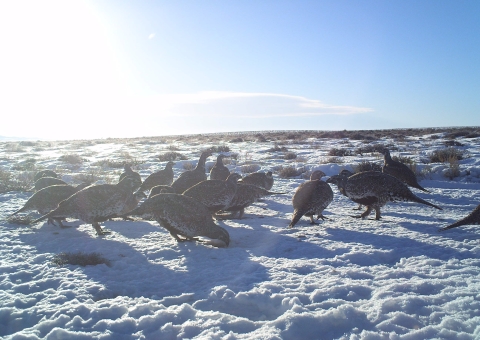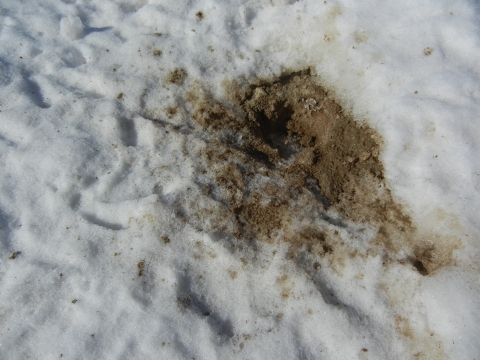EDITOR'S NOTE: 2023 marks the golden anniversary of the ESA, a law that has been a powerful catalyst for conservation of America’s most treasured fish, wildlife, plants and their habitats for five decades. People power the mission of the U.S. Fish and Wildlife Service. Here in the Pacific Region, Tribal, federal and state partners, local supporters, and our dedicated staff are the driving force behind the successes we share and the strength ensuring we can continue to face the challenges ahead. Throughout this year-long celebration, we invite you to celebrate this milestone with us as we reflect on past successes, assess current challenges, and envision an equally bright future for the next 50 years and beyond.
This story was originally published on November 21, 2017.
One afternoon in 2013, Bureau of Land Management Wildlife Biologist Josh Hemenway was driving down a fence line looking for sage-grouse fence strikes, or places where a bird might have flown into a fence. He drove near an area where it looked like the birds had pecked out holes in the snow to get to the dirt below.
“Along this two-track (road) there was this matted down area in the snow,” Hemenway said. “Just matted down. It wasn’t a lek. Why were the birds concentrating right there? We punched through the snow and found ping-pong ball-sized holes in the soil.”
Hemenway and his colleagues discovered that the birds were actually eating dirt, a phenomenon known in biology as geophagy. Bird species such as pigeons and parrots eat dirt, and larger mammals such as bats, chimpanzees, and even humans have also been known to practice geophagy. Different species might eat dirt for different reasons, such as minerals in the soil or diet supplementation. Hemenway decided to investigate.
“We looked through literature and didn’t find anything,” Hemenway said. “So we proceeded to call a handful of grouse experts, and they said they had never heard anything. The winter of 2013 is when we started to notice it, and our efforts have grown since then.”
Josh and his colleagues have a few early-stage theories as to why the sage-grouse near Pinedale might be practicing geophagy:
Something in the soil might help with breeding: The sage-grouse have only been practicing geophagy in the winter, and stop when breeding season starts in the spring. Is there something in the soil that the sage-grouse need for breeding?
Supplementation of diet during the winter: During the winter, sage-grouse exclusively subsist on sagebrush sagebrush
The western United States’ sagebrush country encompasses over 175 million acres of public and private lands. The sagebrush landscape provides many benefits to our rural economies and communities, and it serves as crucial habitat for a diversity of wildlife, including the iconic greater sage-grouse and over 350 other species.
Learn more about sagebrush . During the non-winter seasons, sage-grouse add insects and forbes to their diet, which means that they’re eating a much higher level of protein. Are they targeting a specific nutrient to supplement their winter diet?
The “antacid theory”: Sagebrush are high in tannins (a naturally occurring compound with an astringent flavor, often discussed for their effect on wine flavors) and terpenes (compounds that produce strong odors, and are responsible for the deliciously unforgettable smell of sagebrush). Hemenway and his colleagues theorize that when sage-grouse are only eating sagebrush, they might seek to “detox” their diets with a little soil.
“So far we’ve been able to document it most thoroughly near Pinedale,” Hemenway said. “But we believe it’s not exclusive there. We have been in contact with researchers in other states, telling them to keep an eye out for it. We haven’t had anyone come back yet to confirm, but it’s hard to believe that it’s only happening in this portion of the range. It could be an artifact of the winters, or how the grouse are distributed that makes them easier to locate here.”
Hemenway and other researchers are seeking to understand how geophagy influences winter distribution, winter habitat selection, and the effect on overall bird fitness. It may take a little bit of time to understand why the birds near Pinedale are eating dirt, but Hemenway is hopeful that they’ll eventually find answers.
“This is not a novel research topic,” Hemenway said. “This is common in a lot of species. It just hasn’t been fully explored yet in sage-grouse.”






